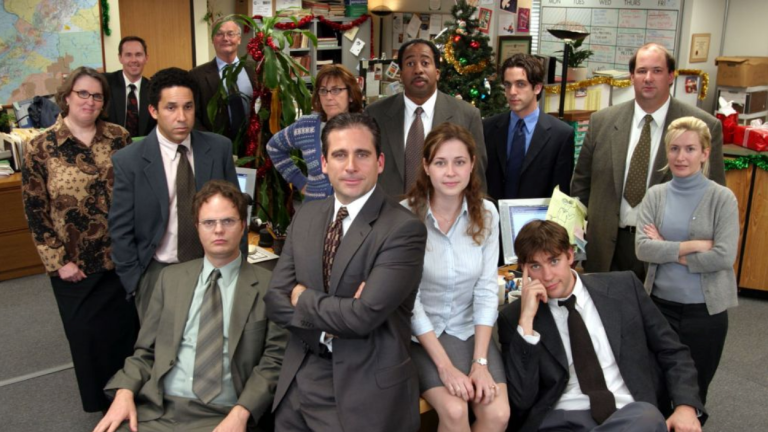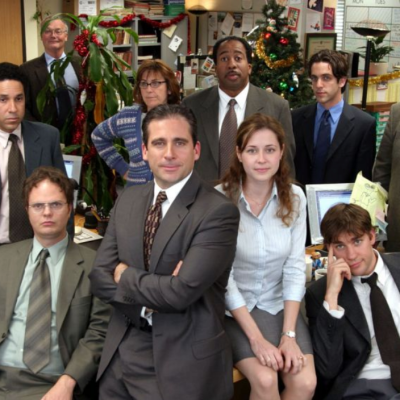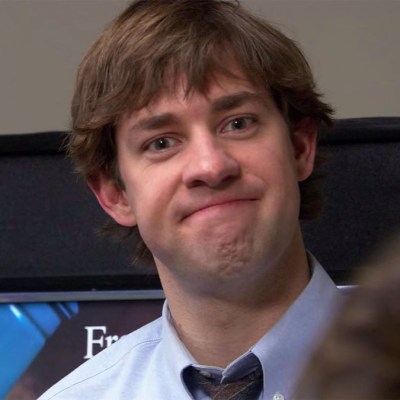What Makes The Office So Rewatchable?
The Office: An American Workplace ended in 2013 but is a growing hit with kids and young people, and was by far the most-streamed show on US Netflix in 2020. Here’s why.

You’ll have heard that young people don’t watch television anymore, which might come as some surprise to young people. They absolutely still watch television, just on their own schedule, not that of a broadcaster, and not the way it used to be done, anchored to a single spot or even a single screen.
If young people didn’t watch television, then The Office: An American Workplace wouldn’t have been streamed for 57 billion minutes in the US in 2020, because it’s far from only those of us who’ve experienced the mundanity of office life who love The Office. Increasingly, it’s youngsters who find in Dunder Mifflin a kind of refuge. They stream The Office like the middle-aged pour a glass of wine after a long day – liberally and probably more often than is good for them. Teenage superstar Billie Eilish told the ‘An Oral History of The Office’ podcast that she’s watched the show all the way through 14 times, a total of 1,000 hours, which by my calculation is roughly how old Billie Eilish is. My 20-year-old niece tells me that you don’t ask if someone else has watched The Office in the past tense, you ask if they watch The Office, because it’s an ongoing cycle that once begun, never really ends. So what explains the enduring appeal?
Comfort in predictability
With no slight to the comedic achievements of The Office, which are legion, its workplace premise means that episode by episode, the show runs along the same rails. It largely takes place in one familiar set that remains pretty much the same for almost a decade. An office workday brings its own rhythm. Morning, lunch, home time… Repeat. Episodes follow that same lulling pattern. The environs and costumes rarely change, and there’s something soothing about the visual constancy. As actor Angela Kinsey told Brian Baumgartner’s Oral History podcast, “You turn it on and you know where everyone’s going to be. You know Pam is at reception and I’m at accounting. Those people become like your extended family and you’re just kind of checking in with them.” When the world news, or your personal life feels on shaky ground, it’s reassuring to mentally escape to somewhere you know won’t jolt or unsettle you.
Nobody’s a supermodel millionaire
The Office was cast by the brilliant Allison Jones, who’d previously cast Freaks and Geeks with teenage unknowns Seth Rogen, James Franco, Jason Segel and more (Rogen later auditioned for the role of Dwight Schrute, which we know now could only ever have been played by Rainn Wilson). Jones’ expertise, and creator Greg Daniels’ vision gave The Office the perfect cast. Its actors weren’t models (Phyllis Smith wasn’t even an actor, but Jones’ colleague who’d read with the actors for auditions and simply couldn’t be bettered) or heart throbs; they were funny and talented and didn’t feel out of place in the somewhat drab setting of Scranton, Pennsylvania. Their characters were decidedly not hot-shots, not rich, and not aspirational in any of the usual TV ways. As Rainn Wilson says on ‘The Oral History’ podcast, “In The Office, no-one’s fashionable.” (Sorry, Kelly Kapoor. He didn’t mean you.) Compare that to the damaging self-perfection of influencer culture and the image and brand-conscious lies of social media and reality TV, and it’s no wonder some young people find Scranton a relaxing place to spend time.
A strangely nostalgic 20th century idyll
The Office isn’t set in the 20th century, but it feels as though it could be. The sense of timelessness was a deliberate move by Greg Daniels, who outlawed pop culture references as a general rule, to ensure that the show wasn’t pegged to a particular period. That was a shrewd move which doubtless contributes to the show’s longevity a decade after it finished airing. American critic Emily VanDerWerff goes one further. Speaking on ‘The Oral History’ podcast, VanDerWerff gives the sharp insight that The Office represents a working life that, thanks to economic instability and the gig economy, is no longer widely available to young people. When The Office started, it captured the drudgery of everyday life, says VanDerWerff, but these days, it’s closer to an escapist fantasy for anyone on a zero hours contract. “The world of Dunder Mifflin, it’s like Brigadoon, it’s in the mists somewhere, we can’t get back to it.” Actor Creed Bratton on the same podcast agrees, likening the show’s world to the fictional town of Mayberry from The Andy Griffith Show, or to 1970s sitcom Green Acres. “They go to work at Dunder Mifflin and the seasons go by and the babies are born and people fall in and out of love, and I think it has sweetness.” It has sweetness, yes, but with a comedic edge that stops it from ever becoming cloying.
We can all relate
If Gen Z are unlikely to personally experience the black hole/reliable comfort of a Dunder Mifflin-ish job these days, does it even make sense to them? Of course, and aside from the fact that they have imaginations, that’s because so much of The Office is universal. The Scranton branch of Dunder Mifflin, with its weirdoes and bullies and warehouse jocks and sweethearts, is a school, and a retirement home, and everywhere in between. The sibling dynamic of Jim and Dwight, or the cliques of the committees, and Michael Scott’s lonely struggle for popularity, is recognisable pain at any age. And as a viewer grows up, with every rewatch, new laughs and understanding swim into view.
There’s joy in abundance
There are over 200 episodes of The Office. It is not a scarce commodity that requires eking out or – to be frank – treating with any respect at all. It’s a bountiful joy. When you’ve seen it once, you can go right back to the start and use it as atmosphere, as a companion, as a marvellous, grateful alternative to all the television that makes demands of you. You know the kind of TV, with its Easter Eggs and call-backs and complicated backstories and the concomitant duty to theorise every two minutes as to what’s ‘really’ going on. The Office asks nothing of you but your company, and given that, it brings rich reward.
The hand of friendship
The mockumentary format provided by the show’s UK original builds in complicity between viewers and characters. When Pam looks to camera across a crowded room, she’s looking specifically at you. Her exasperation and shock and desperation are appeals made to you, the friend who understands. The lightly serialised, beautifully honed character comedy of The Office is your low-maintenance, always-there companion, a friend for life with a good heart and a wise eye for the beauty in ordinary things. The real question is, why wouldn’t you rewatch?
The Office: An American Workplace is available to stream on Peacock in the US and on Netflix in the UK. Listen to Brian Baumgartner’s ‘An Oral History of The Office’ on Spotify and elsewhere.


